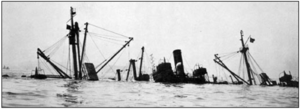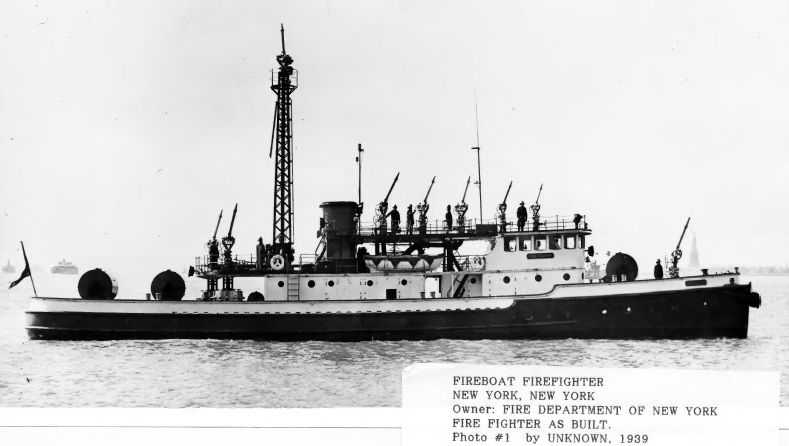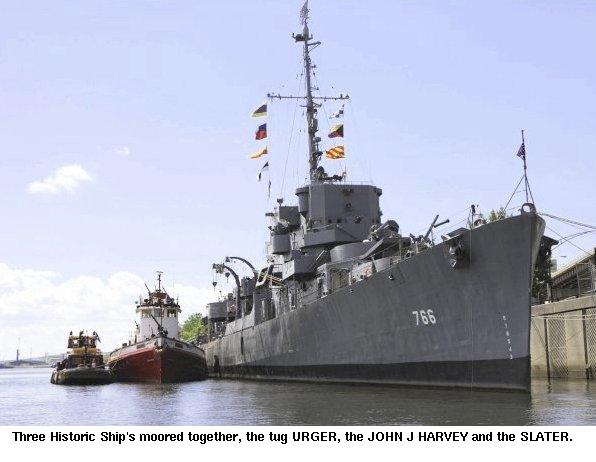Remembering the Day New York Harbor Almost Blew Up
Today marks the 70th anniversary of a narrowly avoided catastrophe in New York Harbor. On the afternoon of 24 April 1943 the SS El Estero, a Panamanian cargo ship, was being loaded with ammunition at Craven Point, just across the harbor from lower Manhattan, when a fire broke out in her engine room. Making matters worse, El Estero was tied up alongside two fully-loaded ammunition ships at a pier that was also packed with explosives.
A similar event occurred during World War I when the French ship SS Mont Blanc, loaded with TNT, guncotton, and picric acid, caught fire after being involved in a collision in Halifax harbor. Her explosion killed 2,000 people, injured over 9,000 more, and caused massive damage to Halifax and the surrounding area. That damage was caused by a single ship. Had El Estero exploded in New York harbor, she certainly would have set off the explosives on the other ships and the pier. The damage to lower Manhattan, Brooklyn, and New Jersey would have been catastrophic.

SS El Estero after being scuttled by Fire Fighter and John J. Harvey
Firemen from New Jersey, Coast Guardsmen, and the fireboats Fire Fighter and John J. Harvey rushed to put El Estero’s fire out. However, some of the burning compartments were inaccessible, so the decision was made to tow the ship away from populated areas and scuttle her. After El Estero was towed several miles away from the pier, Fire Fighter and Harvey continued to pump water into her hull until she settled to the bottom. The situation was finally brought under control by midnight on the 24th.
The Navy learned a valuable lesson from this near disaster, namely, that it is a bad idea to load ammunition ships in a heavily populated area. For those old salts who ever had to empty their ships on the long pier at Naval Weapons Station Earle in New Jersey, now you know why. The long pier was built as a direct result of the El Estero fire. Unfortunately, the lessons learned in New York Harbor were forgotten in Port Chicago, California, where an explosion aboard SS E.A. Bryan set off a chain reaction that destroyed most of the facility and killed 320 sailors, most of whom were African American.

Fire Fighter shortly after being put into service as a fireboat
It is also interesting to note that the two fireboats that averted disaster in New York Harbor in 1943 also played a pivotal role in Manhattan after the terrorist attacks on the World Trade Center on 11 September 2001. The towers’ collapse destroyed fire mains in lower Manhattan, so Fire Fighter, which was still on active duty, and John J. Harvey, which had become a museum ship, pumped water into the city for eighty straight hours to help fight fires. Fire Fighter finally retired in 2010 and is now a museum ship herself. I personally had the pleasure of meeting Harvey’s crew when they tied up alongside my old museum ship USS Slater DE-766 in Albany, New York. They put on a great barbecue.

John J Harvey (center) alongside USS Slater DE-766, August 2005
Posted by Curator Eric Rivet.
- Posted :
- Post Category :
- Tags :
- Follow responses to this entry through the RSS 2.0 feed. You can skip to the end and leave a response. Pinging is currently not allowed.




Leave a Reply